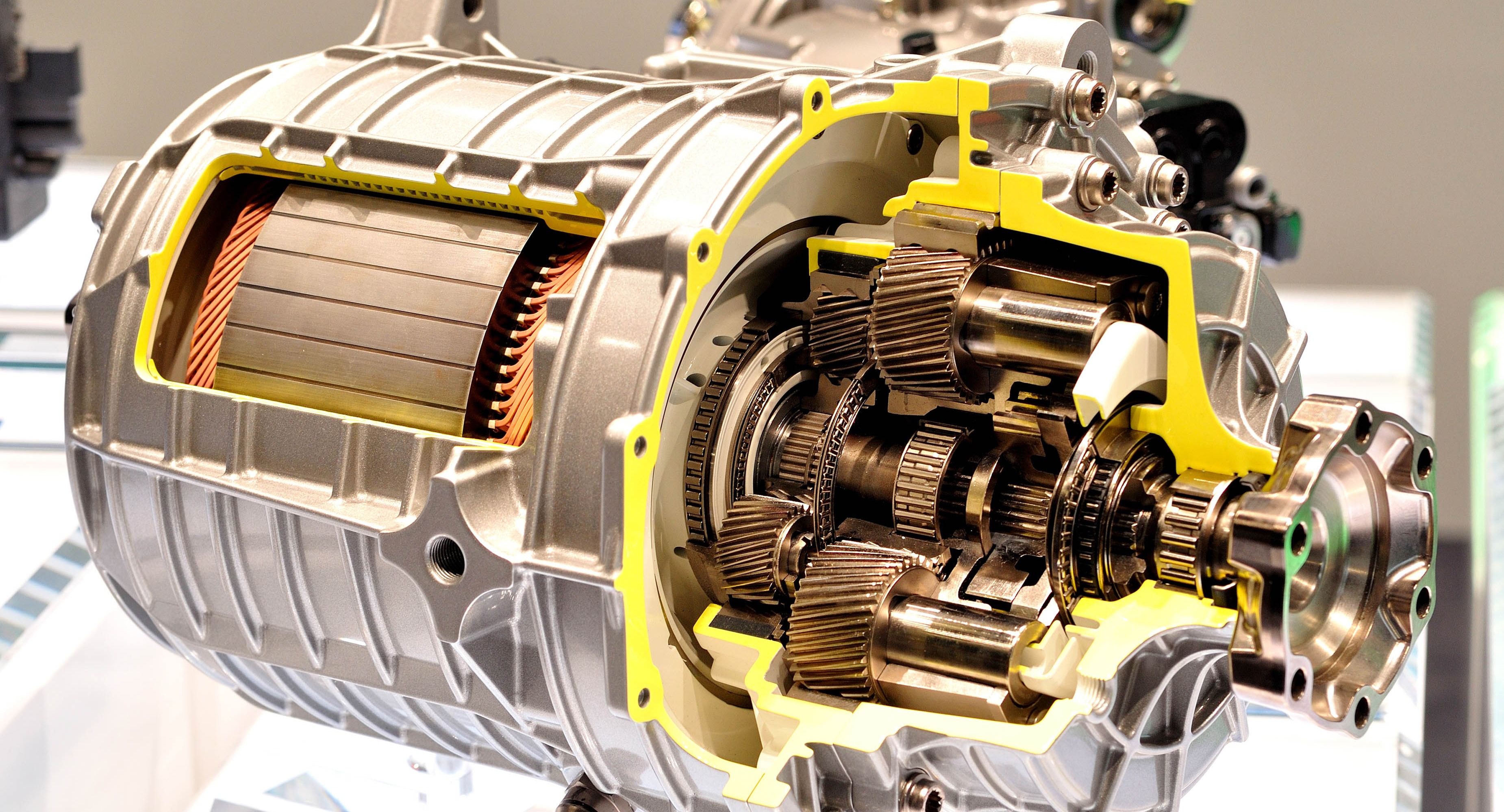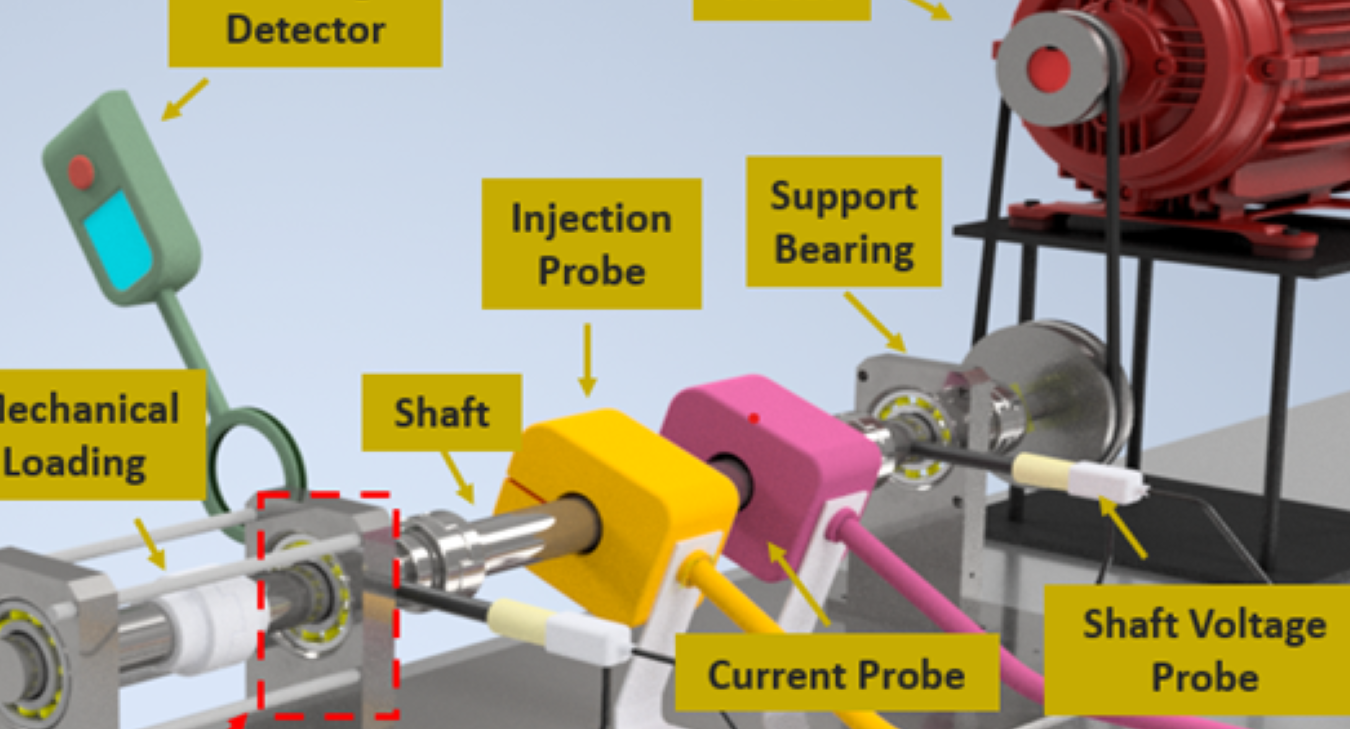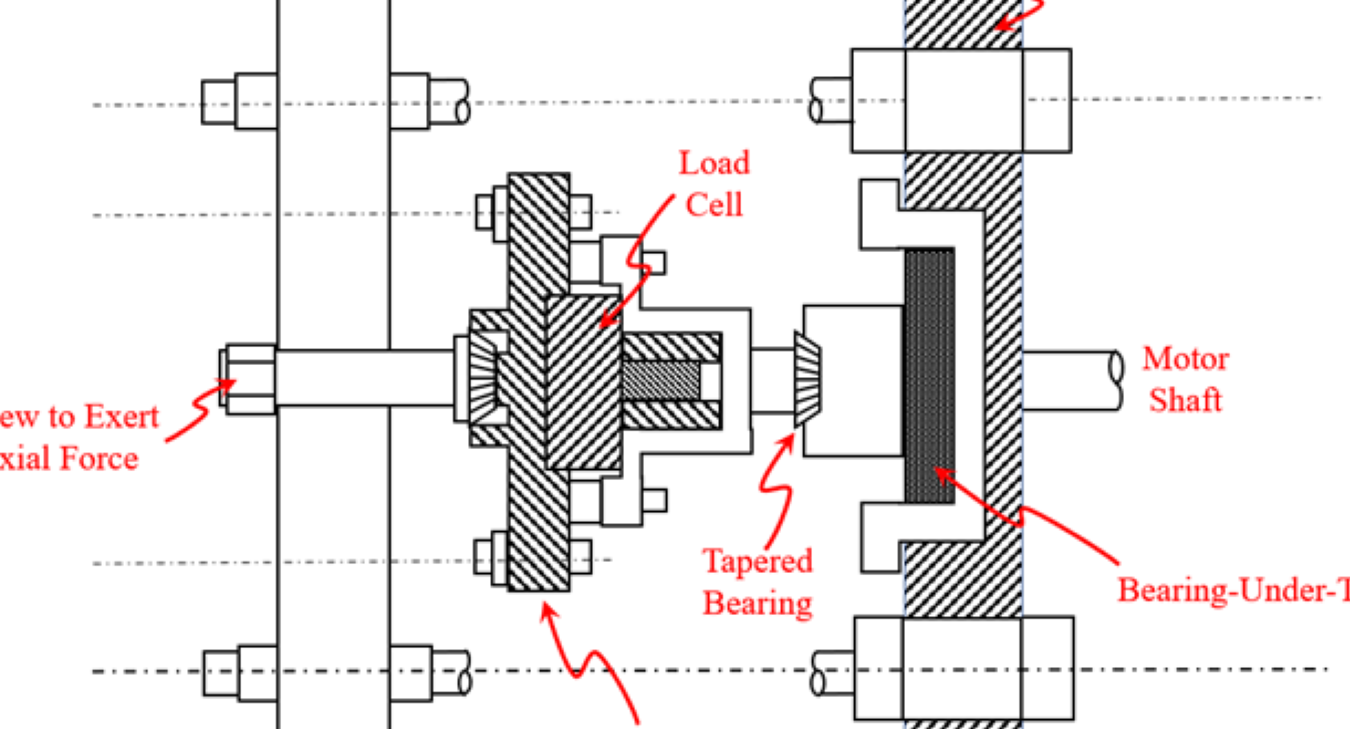System for Testing Degradation in Bearings caused by Mechanical and Electrical Loads



KEY INFORMATION
Manufacturing - Assembly, Automation & Robotics
TECHNOLOGY OVERVIEW
Conventionally, the design consideration of bearings is very much driven by the mechanical loading condition. With the advancement of wide bandgap (WBG) power electronic devices and pulse-wide modulation (PWM) control techniques, the electrification of motor drive system has found wide applications due to its compact size and high-power conversion efficiency, such as electric vehicles and more-electric aircrafts. However, motor drive systems incorporating high-speed switching devices produce time-varying high-amplitude common-mode (CM) voltage, which results in undesirable CM current in the motor drive system that also flows through the bearings.
This phenomenon causes frosting, fluting, and pitting on the bearing and leads to premature bearing failures, which results in unexpected downtime of critical systems. Existing bearing test systems focus on the impact of mechanical load on bearing degradation, but no comprehensive bearing test system is available to evaluate the bearing degradation due to both mechanical and electrical loads.
A comprehensive test system with the ability to include the electrical load has been invented. The test system allows the life-span prediction of the bearing under varying electrical load conditions (pulsed current amplitude and repetition rate) at realistic operating conditions with adjustable axial force, rotational speed, and thermal conditions. The measurement data collected can be used to quantity the effectiveness of different bearing designs on extending the lifespan of the bearing under the influence of electrical load. The team is seeking a commercial partner to further develop and bring this technology into commercialization.
TECHNOLOGY FEATURES & SPECIFICATIONS
The bearing test system consists of: (1) Bearing-holder on a rotating shaft; (2) Subsystem to emulate mechanical load; (3) Subsystem to emulate electrical load; (4) Data acquisition subsystem to monitor the vibration as an indicator of health degradation of the bearing-under-test; (5) Software algorithm to estimate the lifespan of the bearing-under-test.
The test system has the following adjustable test conditions: (1) Rotational speed up to 2500 rpm; (2) Axial force up to 10 kN; (3) Pulsed circulating current in the bearing up to 3A peak; (4) Pulsed current frequency up to 10 kHz.
The potential collaboration partners are test and certification laboratories and bearing manufacturers.
POTENTIAL APPLICATIONS
The measurement data collected from the bearing test system help evaluate the quality and reliability of any motor-driven products consist of bearings. Therefore, it can be deployed in various industries where bearings are used, such as the automotive, aerospace industry, marine, and energy industries. The bearing test system generates valuable data and insights of the bearing health condition under varying electrical load conditions that can emulate different power ratings of the motor drive systems without building the full systems. It can assist to design and develop high-performance bearings that are immune to electrical loads. The potential customers of the test system are manufacturers of bearings, machinery and equipment manufacturers, electric vehicle manufacturers, and industries that use high-power motor drive systems.
Market Trends & Opportunities
Bearings are virtually used in every kind of equipment or machinery, ranging from automobile parts, farm equipment, and household appliances to defence and aerospace equipment. The global bearing market size was valued at USD 111.59 billion in 2022 and is expected to grow at a compound annual growth rate (CAGR) of 10.6% from 2023 to 2030.
As one of the major causes of machinery downtime and productivity loss, the issue of bearing failure has become increasingly important in various industries. Therefore, a comprehensive and cost-effective bearing test system becomes a valuable tool in the market.
Unique Value Proposition
The current bearing test systems primarily concentrate on assessing the influence of mechanical load on bearing degradation. However, there have been no reported bearing test systems that incorporate both mechanical and electrical loads. To address this gap and evaluate the bearing degradation mechanism caused by advanced power electronic devices (i.e., the electrical load), a novel test system has been invented with the ability to include both the electrical and mechanical loads during testing.
